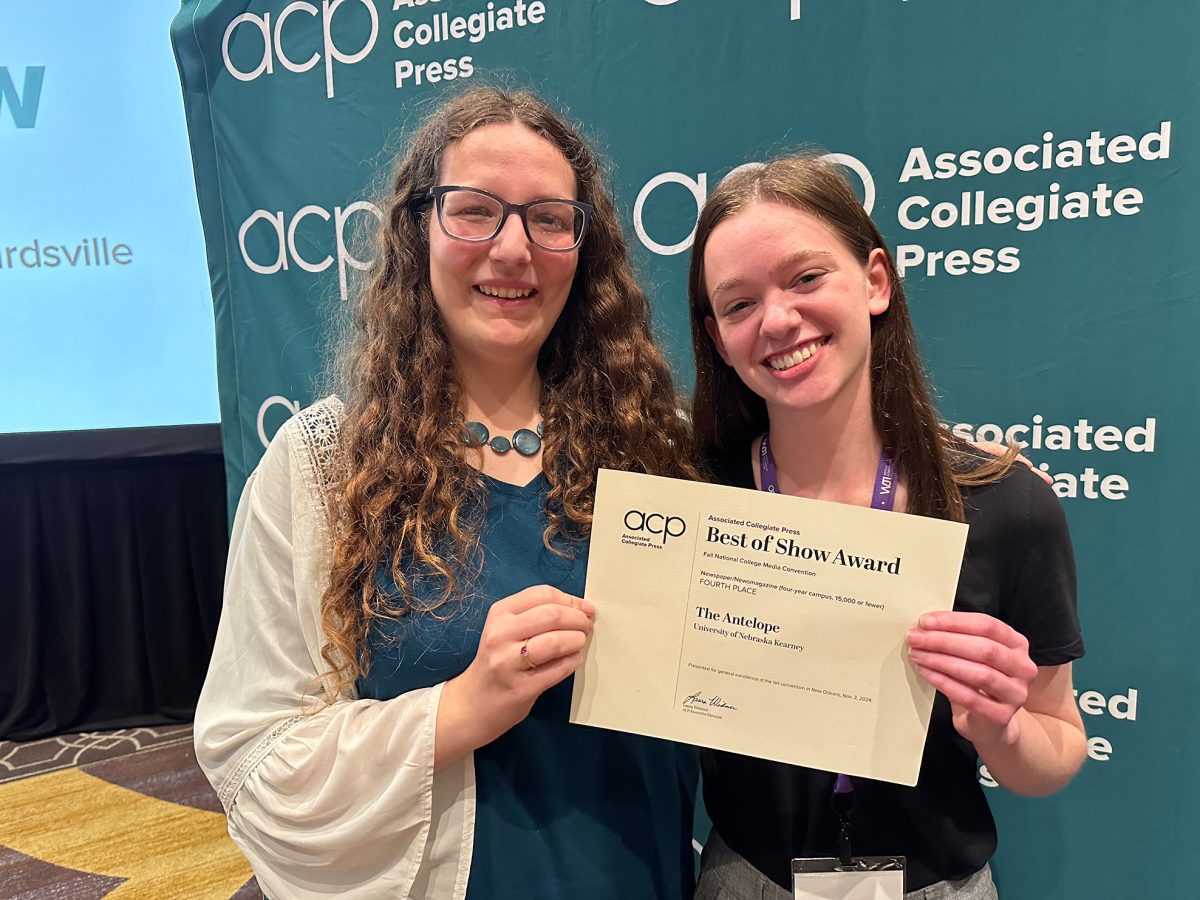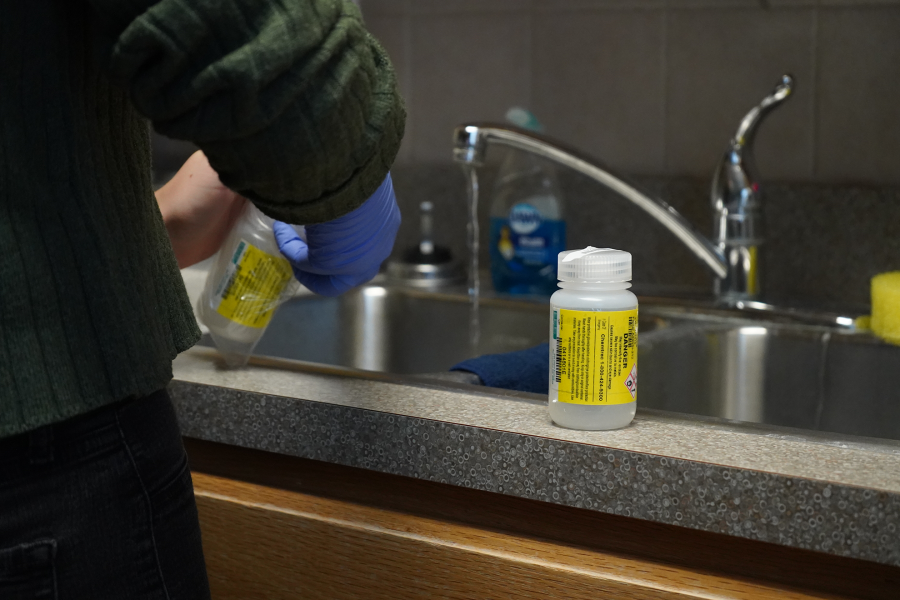bruningm@lopers.unk.edu
An invisible threat lurks in Nebraska’s water supply: Nitrate.
Nitrate is a common component in fertilizer that makes our crops grow. But according to the Nitrates in Nebraska website, nitrate contamination in drinking water could be one cause of the higher-than-average pediatric cancer rate.
According to Yanqi Xu of the Flatwater Free Press’s article “Our Dirty Water”, high nitrate levels are linked to colon cancer. It can cause premature labors, miscarriages and anemia in pregnant people.
The Antelope conducted water tests in residence halls to see if UNK’s water was compromised. Household water kits were purchased from Ward laboratories in Kearney.
Water was tested from Centennial Towers West, Men’s Hall and Antelope Hall on Nov. 17.
No high levels of contaminants were detected. All samples met the legal limits established by the Environmental Protection Agency.
The chart shows the results analyzed by Ward laboratories and completed by Nov. 28. The residence halls are listed in the chronological order of when the samples were collected. One ppm equates to one gallon of concentrate in one million gallons of water. MCL stands for the maximum contaminant level allowed in drinking water.
The reason for Kearney’s safe water quality may be owed to the city’s well fields. Two distribute water to the community. The first is the Platte River Well Field constructed in 1983. This was the main water distribution system in Kearney.
The civil engineering firm, Miller & Associates, installed the Northwest Well Field in 2007. This second field was needed since the Platte River Well Field is more vulnerable. Because of its close location to the river, it is prone to more flooding, ice jams and contamination.
According to Chris Miller, a professional engineer with Miller & Associates, this second field acts as a backup water supply for the City of Kearney.
“It serves as a redundant supply in case something bad happens to the other well field,” Miller said. “The wells in the Northwest well field that we developed was much deeper, so they’re naturally protected from nitrates that come from the surface.”
All cities in the United States are required to submit annual water quality reports. These monitor the Maximum Contaminant Level of minerals in drinking water. They list likely contamination sources and descriptions of health effects from certain components.
These reports annually track the Midwest nitrate levels.
“Nitrates are really low considering the rest of the state does have a lot of issues,” Miller said. “We have a really good water quality.”
































